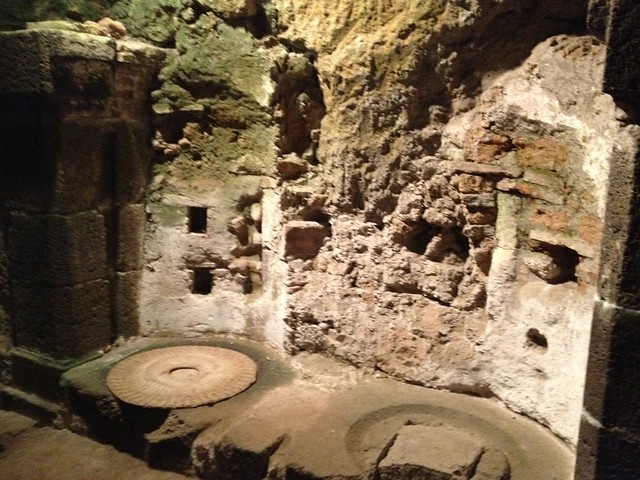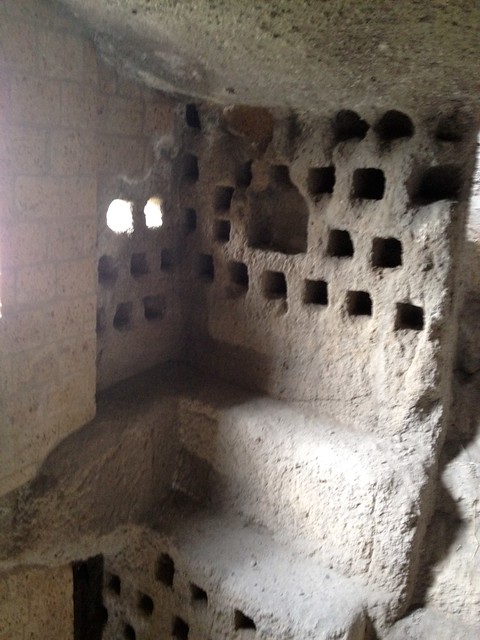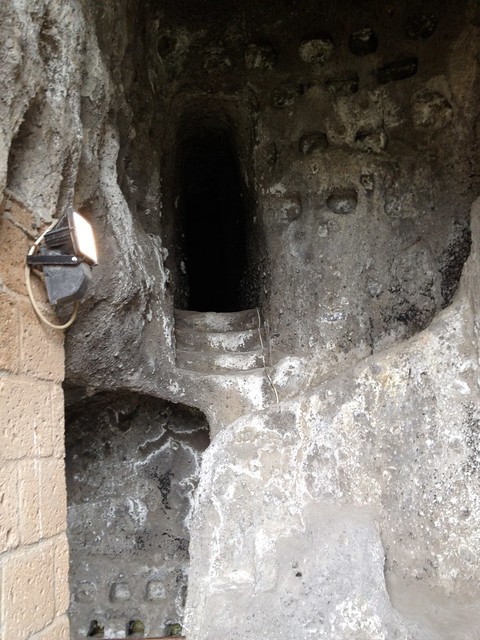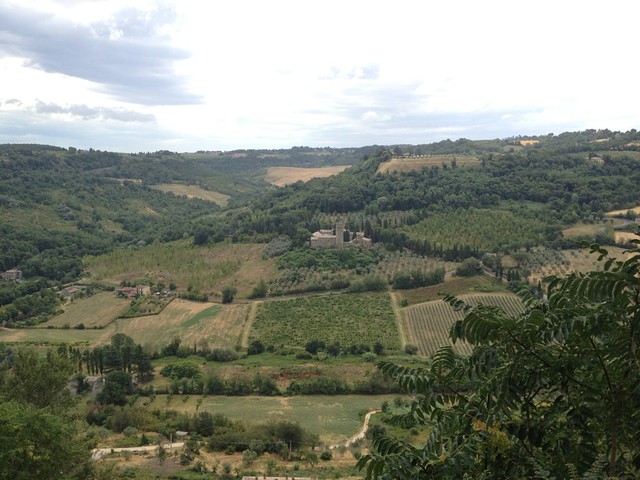After we disembarked the ship at the port of Civitavecchia, we took a tour of Bagno Reggio and Orvieto, two picturesque towns, before heading to our hotel in Rome. My mom will make a more general post about our tour, but I thought I'd detail a specific and unusual visit we made, "
Orvieto Underground." The town of Orvieto, Italy, is perched high on a dramatic hill above the Umbrian countryside. Because of its unusual situation on a rocky hill with almost vertical cliff faces, it sits above literally hundreds of caves, both natural and manmade. We took a tour that gives you a taste of the underside of Orvieto by walking through two of the numerous caves. My photos in dim light aren't the greatest, but here are a few, with a little information about what we saw.
 |
| A door within a cave in Orvieto |
The first cave we toured had been used for the production of olive oil, and contained wheels (originally turned by donkeys) and other equipment used for that purpose. Although my pictures of it didn't turn out well enough to share, this cave contained perhaps the most interesting thing we saw: a narrow, seemingly bottomless shaft, actually about 80 meters deep, that was dug by the original Etruscan inhabitants of Orvieto as far back as the 6th century B.C. There are dozens of similar shafts beneath Orvieto, and they were used as wells by the Etruscans. Interestingly, you can see footholds on either side of the shaft, suggesting that they were dug by one person climbing up by putting his or her feet on alternate sides.
 |
| A place where olive oil was made |
The second cave was deeper, but it had "windows" on the cliff face. This series of caves was used to raise pigeons, which the inhabitants of Orvieto ate for centuries. The pigeons, our guide told us, nested in the cubical holes you can see in this image, and proved to be easy-to-raise, since they would feed themselves by flying out of the windows and foraging, then returning to their roost.
 |
| A view of the pigeon-raising cave |
 |
| Another space in the pigeon-raising cave |
Most of the Orvieto caves are privately-owned, and are used as wine cellars by those who live in houses above them. The final space in the second cave we visited was used during World War II as a refuge for people in the surrounding countryside. Here's a final picture of the view from one of the windows in the pigeon cave, which gave a beautiful view of the landscape around Orvieto.
 |
| The landscape near Orvieto, seen from a cave |










No comments:
Post a Comment